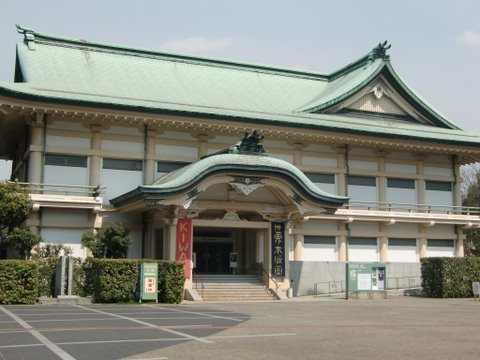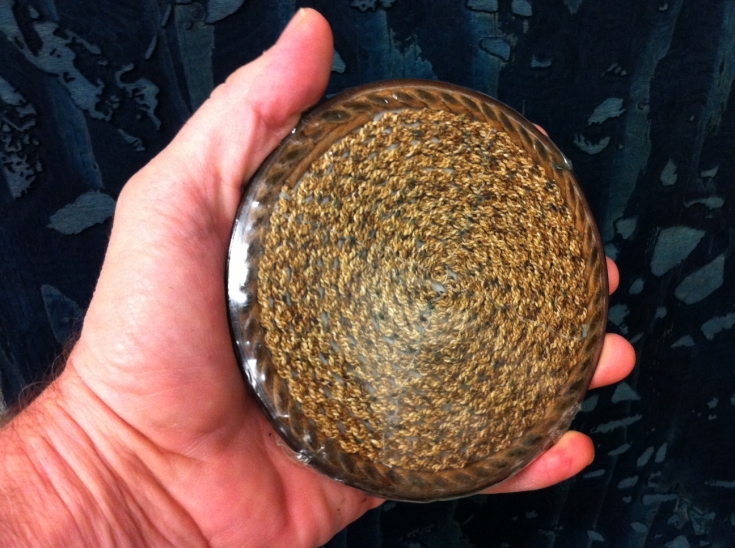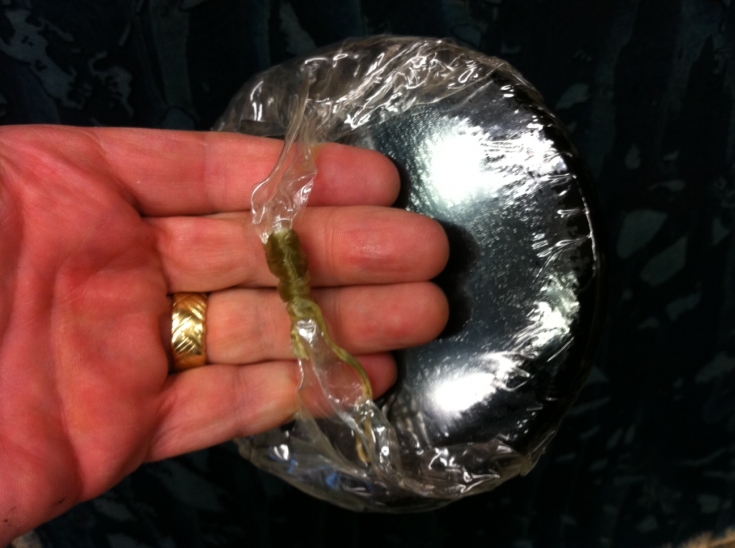Today's postings
- [Baren 43220] Re: baren wrapping (Annie Bissett)
- [Baren 43221] Suggestions re: Mold/Mildew (Lee Churchill)
- [Baren 43222] cover baren with heat shrink tube ? (Mike Lyon)
- [Baren 43223] Re: cover baren with heat shrink tube ? (Diana Moll)
- [Baren 43224] Re: cover baren with heat shrink tube ? (Graham Scholes)
- [Baren 43225] Re: cover baren with heat shrink tube ? (olek wozniak)
- [Baren 43226] Re: cover baren with heat shrink tube ? (David Bull)
- [Baren 43227] Re: Shina Plywood source? (Susan Clark)
- [Baren 43228] Baren Member blogs: Update Notification (Blog Manager)

Message 1
From: Annie Bissett
Date: Mon, 18 Apr 2011 13:34:49 GMT
Subject: [Baren 43220] Re: baren wrapping
Send Message: To this poster
Seems like anyone who has ever done it ends up with something very
similar to what I ended up with on their first few tries. Graham,
that's a great idea to practice with something else before making the
commitment to an actual bamboo skin.
I also learned that the bamboo skin is not a leaf at all, but rather
comes from the trunk of the bamboo plant. Someday I'd like to see the
plant and get a clearer idea of what we're using when we wrap a baren.
Out of my fear of learning to wrap a baren, I've searched high and
low for an alternative. I've tried several plastic baren, a ball-
bearing baren, a speedball baren, various round smooth objects. Each
has certain properties that are useful in certain circumstances, but
I have to admit that a traditional bamboo baren is the best, most
sensitive, most versatile all-around tool for moku hanga. I *will*
learn to re-cover my baren skillfully. Eventually :)
Thanks again,
Annie

Message 2
From: Lee Churchill
Date: Mon, 18 Apr 2011 15:34:47 GMT
Subject: [Baren 43221] Suggestions re: Mold/Mildew
Send Message: To this poster
Mold and mildew are nasty and hard to get rid of. The colours you see are normally the waste products produced by the growing fungus, they are VERY colourfast. Yellow is pretty unusual, here in Calgary I normally see pink or black/green, but it’s likely a difference due different mold species in different locales.
Please, anything you’ve pounced with that bleach powder get rid of or wash very very thoroughly! Bleach powder is activated by water (like the moisture on your hands or in nasal passages) and could burn the skin of anyone who touches it. As people have mentioned chlorine bleach will burn through clothing in strong concentrations.
You can’t “kill” mold, per se, not only that but it exists everywhere in the air around us and on all surfaces, so you can’t get rid of it either. You can ‘deactivate’ it to keep it from continuing to grow and worsen and you can use various agents to reduce the colours. The best way to deactivate mold is to keep the environmental conditions to a level where mold is disinclined to grow – 20-21degrees C, no more than 55% humidity. In Florida this may not be possible, so I’d suggest airflow. Don’t keep your drawers closed, keep fans on as much as possible, interleave heavily with acid free paper and every few months shuffle things around. Laying works out in the sun will help to deactivate the mold, as has been suggested, but you don’t want to lay anything out for too long or you risk fading.
As someone mentioned doing any active treatment yourself is risky, and no conservator would guarantee any results of work done by yourself. That said, I do tell people options, with the caveat that if anything goes wrong – it’s not my fault. There are treatments that are ‘safer’ than others but any chemical intervention has the potential to cause more damage.
Chlorine bleach and lemon juice are not recommended. The chlorine bleach is too strong and anything left in the paper attacks the cellulose over time. The lemon juice contains citric acid which will attack paper but also contains various sugars, and compounds that will actually give more food to the mold.
Never use any decolouring agents if you can’t repeatedly and thoroughly wash the work afterwards to remove leftover chemicals. You don’t want anything left in your paper – it will show up one way or another over time (that may be 100 years but it will show).
Pharmacy grade peroxide is ‘fairly’ safe for your paper – the chemical reaction involves the peroxide breaking down into oxygen (the decolouring agent) and hydrogen gas (the fizz). That is also the potential problem, if the mildew has weakened the paper sufficiently, as the hydrogen gas bubbles inside the paper it can ‘blow up’ from the inside, so you end up with soft, or delaminated, areas. This is especially bad with wood pulp papers.
You can sun bleach mildew – put the print in an alkaline bath (around pH 8, no more than 9), and put it outside on a sunny day for ‘a while’ until the spots are gone. This is a very gentle and traditional method of removing colour, but unless you have pH strips or some way of telling how basic your bath is you risk frying your paper. Also if there is any wood pulp (sulphite pulp) in your paper it will turn black…depending on your pigments some may fade. You can make a bath alkaline a bunch of different ways –calcium hydroxide is what I’d recommend if you can get it. Chaulk powder (calcium carbonate) will work, though it doesn’t usually raise the pH very high. Ammonia will do the trick but commercial products often contain lots of extra additives. I’ve even heard of slaked lime being used, but I consider that somewhat risky from a handling perspective myself – you put slaked lime powder in a bucket, fill it with water, stir it, let it settle overnight then siphon off the clear top liquid which will be something like pH 14 – highly highly caustic…
Anyway I hope this helps and if you have any questions, please let me know,
Cheers,
Lee

Message 3
From: Mike Lyon
Date: Mon, 18 Apr 2011 16:08:23 GMT
Subject: [Baren 43222] cover baren with heat shrink tube ?
Send Message: To this poster
time it has been hard to find and the cost keeps rising.
Thinking about alternative materials, heat shrink tubing came to mind and
I've given it a try with some success. The material I used doesn't seem
quite thick enough, but it's held up through the equivalent of about 800
oban printings without any visible wear so... One nice thing about it is
that it seems to require almost NO practice or dexterity to make a working
and long lasting cover.
I've posted some step-by-step images here:
http://mlyon.com/2011/04/pvc-heat-shrink-baren-cover/
-- Mike
Mike Lyon
Kansas City, Missouri
http://mlyon.com

Message 4
From: Diana Moll
Date: Mon, 18 Apr 2011 16:25:40 GMT
Subject: [Baren 43223] Re: cover baren with heat shrink tube ?
Send Message: To this poster
-dmoll

Message 5
From: Graham Scholes
Date: Mon, 18 Apr 2011 16:36:53 GMT
Subject: [Baren 43224] Re: cover baren with heat shrink tube ?
Send Message: To this poster
Graham

Message 6
From: olek wozniak
Date: Mon, 18 Apr 2011 16:45:55 GMT
Subject: [Baren 43225] Re: cover baren with heat shrink tube ?
Send Message: To this poster

Message 7
From: David Bull
Date: Mon, 18 Apr 2011 23:49:54 GMT
Subject: [Baren 43226] Re: cover baren with heat shrink tube ?
Send Message: To this poster
> Thinking about alternative materials, heat shrink tubing came to
> mind and I've given it a try with some success.
Knowing of his interest in this sort of thing, I sent the link to Goto-
san the baren maker. Here's a capsule of his reply:
***
What an interesting method! I studied this with great interest. Many
people seem to be very interested in finding alternative methods of
wrapping their barens.
I myself have experimented with heat-shrink plastics for this, but
found them too thick to be useful. I have wondered what it would be
like with thinner sheet, but have yet to be able to try it.
I am always thinking about ways to make the wrapping process simpler
for people.
I will be giving demonstrations on the baren at the Kyoto meeting in
June, and although it is very costly for me to attend, I hope that
many of the overseas visitors will be able to learn even a little bit
more about barens.
Goto Hidekiko
***
Dave

Message 8
From: Susan Clark
Date: Tue, 19 Apr 2011 00:34:56 GMT
Subject: [Baren 43227] Re: Shina Plywood source?
Send Message: To this poster
I will be happy to send you a sample of what we have - please supply address.
Susan Clark
susanc@graphicchemical.com
Digest Appendix
Postings made on [Baren] members' blogs
over the past 24 hours ...
Subject: Photos From 2011 KIWA Exhibition
Posted by: Annie B
My friend Jamie Hubbard, Professor of Buddhist Studies at Smith College, has spent the past few months studying in Kyoto and this weekend he emailed me some photos from the 6th KIWA Exhibition which just took place there. Here are Jamie's photos. Kyoto Municipal Museum of Art  Installation view [Long item has been trimmed at this point. The full blog entry can be viewed here] |
This item is taken from the blog woodblock dreams.
'Reply' to Baren about this item.
Subject: PVC Heat Shrink Baren Cover
|
From time to time it’s been difficult to obtain quality takenokawa (bamboo husk) for recovering my barens.� For some time I’ve wondered about alternative materials for baren covers, especially about using heat shrink tubing.� I bought some six inch wide clear layflat PVC heat shrink tubing (12 inch circumference), cut a length about 2 1/2 times the diameter of my baren, trimmed the ends to make thinner handles and… It seems to have worked pretty well, actually!� Covering a baren with takenokawa the traditional way requires a lot of practice and some dexterity.� Covering a baren with PVC heat shrink tubing seems to require very little skill or dexterity — as long as you don’t over heat the material (or the baren!) it seems pretty fool-proof. The particular PVC heat shrink tubing I acquired seems a bit too thin or light weight (5 mil) for a baren.� Even so, less flexible than takenokawa but seems hardier.� Hardiness is good because the shrink-wrapped baren is completely encased front and back so it’s impossible to rotate the baren during printing so all wear occurs where the high points of the coil press the shrink wrap against the paper and block. When lubricated with camellia oil, the PVC covering glides over the paper with about the same ‘feel’ as takenokawa, though because it’s completely non-absorbent and glossy smooth, it seems to run dry of lubricant faster than takenokawa and then friction increases… I think I’ll eventually be able to find a shrink tubing with more ideal characteristics — in the meantime, this stuff seems to work better than I’d expected. |
This item is taken from the blog MLYON.com � Woodblock.
'Reply' to Baren about this item.
Subject: Finished Carving Mythology Block
Posted by: Ellen Shipley
This item is taken from the blog Pressing-Issues.
'Reply' to Baren about this item.
Subject: God's Area Code
Posted by: Linda Beeman



